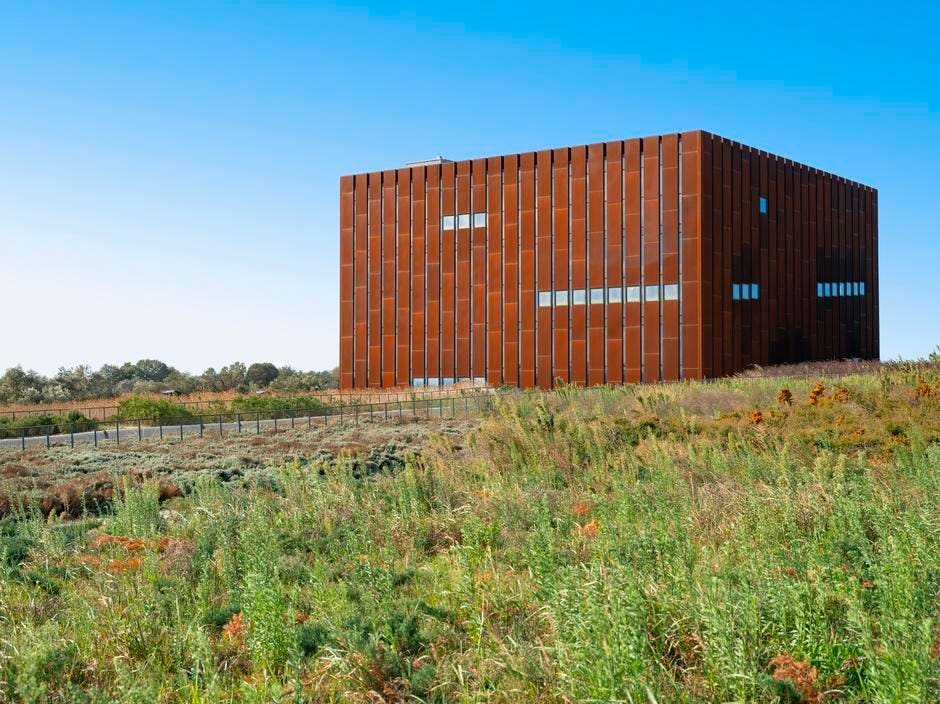Certain places are so mythical that we can forget they’re real. But even if you happen to know exactly where the ancient site of Troy lies, it may come as a surprise just how easy it is to visit these days.
In the Çanakkale province of western Türkiye, the Troy Museum lies just outside the ancient site proper.
getty
A new suspension bridge—the world’s longest—makes all the difference. Opened just two years ago to take you over the Dardanelles strait from the Gallipoli peninsula to Çanakkale province, the 1915 Çanakkale Bridge (the year honors the WWI Battle of Gallipoli) means skipping a long ferry ride for a much shorter four- or five-hour drive from Istanbul to Troy. It’s all part of Türkiye’s new push to highlight its portion of the pan-Mediterranean Aeneas Route of ancient sites.
As you wander over Troy’s 74-acres, you may find it less extensive than you’d expected, considering that it represents effectively ten cities and more than 5,000 years of human settlement. Still, it’s a lot to pack into one visit and thankfully you can tread over the lumpy terrain on recently built wooden boardwalks, with welcome benches to rest on.
From viewing platforms along the 70-foot-high Troy mound, you look over the now broad alluvial plain of the Scamander River delta, a vantage point from which it’s hard to imagine that the sea once used to reach up here a few miles inland. In the distance you’ll spot the tip of Gallipoli peninsula and Tenedos island (Bozcaada in Turkish) where Virgil says the Greeks hid their ships during the Trojan War. Make it here in spring and you’ll delight in fields of poppies, and numerous bird species, the same ones that appear in the Iliad.
A wide wooden boardwalk circling Troy makes the ancient city much more accessible of late.
getty
In a now well-told tale, the roguish late-19th-century German trade merchant Heinrich Schliemann first did a great deal of damage with his primitive excavations, before he then smuggled away copious treasures from the level now called Troy II. For all that, he’s also paradoxically credited with having helped advance archaeology as a field, and important finds by his professional successors are now held in Istanbul, Athens, and Berlin.
Several decades ago, a national park was declared for some fifty square miles surrounding Troy and UNESCO declared it a World Heritage Site. Per UNESCO rules, Troy has not been reconstructed, and Director of Troy Excavation Rüstem Alsan is deliberately keeping areas unexcavated for future generations to discover.
The new 1915 Çanakkale Bridge across the Dardanelles is the world’s longest suspension bridge and dramatically cuts the drive from Istanbul to Troy.
getty
Just inside the Troy entrance, you’ll spot an outdoor collection of large urns called pithoi pots that hold oil, wine, and grains. And there too you can’t miss a bit of expected tourist fun in the form of a 40-foot-tall pinewood Trojan horse.
Unless you’re steeped in Troy archaeology already, the various city levels can be dizzying to grasp. On the boardwalk, you’ll soon be wandering among sun-dried adobe brick walls and mighty limestone blocks, such as those at the Troy VI East Gate that look like they were placed yesterday.
In short, Troy I goes back to 3000 BC, while Troy IX represents the Roman era up to 500 AD when an earthquake struck. For the record, Troy VI and VIIa are connected to Homeric Troy. Not long ago, Troy excavation chief Alsan dug even dipper and we now have a Bronze Age Troy 0 level as well.
The infamous 55-foot-deep Schliemmann’s Trench in Troy II is where the German did his major digging damage. The site’s Bronze Age Ramp leading from South Gate to the Citadel corresponds to this level or period. So too does a megaron, or great hall, whose red mud walls are reinforced today; it’s the only part of the archaeological site under a protective sail-like canopy cover.
From the 2nd century AD Roman era when the city was already a tourist site, the small Odeon with its rows of marble seating is not only intact, but it looks like a play or musical performance could still take place today. Hadrian was responsible for its reconstruction as well as for building Roman baths in this Troy IX layer.
In Çanakkale, the actual wooden horse used in the 2004 Brad Pitt “Troy” movie was given to the city as a gift and is a popular seafront attraction.
getty
Rising right out of some fields and olive groves half a mile from the archaeological site proper, a handsome huge cube of rusty-looking Corten steel holds the Museum of Troy. Designed by the Yalın Mimarlık studio, the museum just opened in 2018 with more than 30,000 square feet of exhibition space over four floors, with its height matching just how deep down Troy’s nine layers go. The museum, where even the hallway ramps in the brushed concrete interior hold display cases, merits a few hours visit.
With pottery shards displayed under a glass floor, the lowest museum level essentially maps out the historic Troas region that you’re in. Small items, such as ancient coins, arrows, and ceramic lamps come from ancient cities that include Tenedos, Dardanos, and Assos. A highlight here is the stunning 4th-century BC marble Altıkulaç Sarcophagus that depicts deer hunting scenes with dogs and boar in painted relief on one side, and Persians spearing a Greek warrior on the other.
Dioramas of mud wall abodes showing hologram figures going about daily ancient life are included in the next level up. The rare Bronze Age hieroglyphic Luwian Seal comes from a people who lived between the Mycenaeans in Greece and the Hittites in Central Anatolia. A number of stunning pieces of 2,400 BC gold jewelry, the so-called “Troy Gold” collection of rings, pendants, earrings and a necklace and bracelet, were returned a dozen years ago by the Penn Museum.
The undisputed highlight of the third level up is the 6th-century BC Polyxena Sarcophagus that was found thirty years ago in the region. Its marble relief figures on all four sides of female musicians and warriors look as if they were chiseled yesterday. Not only is the sacrifice of the Troy king Priam’s daughter Polyxena graphically detailed, wrinkles are even visible around her mother Hecuba’s eyes. This floor includes a full statue of Hadrian that was found at the Odeon in Troy.
In the top-level displays around an atrium, the history of excavations largely by Europeans more than a century ago is recounted. On a wall in front of empty placeholder displays, the words “Trojan Artefacts Longing to be Reunited at Home” are in reference to the movement of repatriation, such as for the 8,000 items that make up Priam’s Treasures still held in Warsaw and the Pushkin Museum in Moscow.
The museum’s rooftop terrace looks over the countryside, a heady view as you think about all the drama that has taken place and all the larger-than-life personages who have passed through Troy over thousands of years.
Travel Notes:
For a lunch as fresh and local as it gets and to cool off with the delicious Turkish ayran yogurt drink, as well as finally sample the famous regional creamy white Ezine cheese, the little Olea restaurant with a shaded patio lies just outside the Troy site.
Sitting on the waterfront in the city of Çanakkale, the actual wooden horse from the 2004 Brad Pitt Troy movie is a huge hit. The city’s restored Aynalı Çarşı covered bazaar goes back to 1890.
For a demonstration of mosaic making, you can schedule a visit to Rhapsodos Mozaik in the Çanakkale home of Emine Özkaya who produces modern versions of ancient mosaics.
In an old stone house in a village outside of Çanakkale, the rustic Hektor Şarap Evi restaurant and wine bar overlooks the Aegean and has live music.
Source: https://www.forbes.com/






More Stories
World Series Of Poker Paradise Events Draw High Stakes Players To Bahamas
NFL Picks, Props And Odds For Week 13 Prime Time Games 49ers-Bills And Browns-Broncos
The World’s Best Whiskey—According To The Authors Of Bourbon Lore